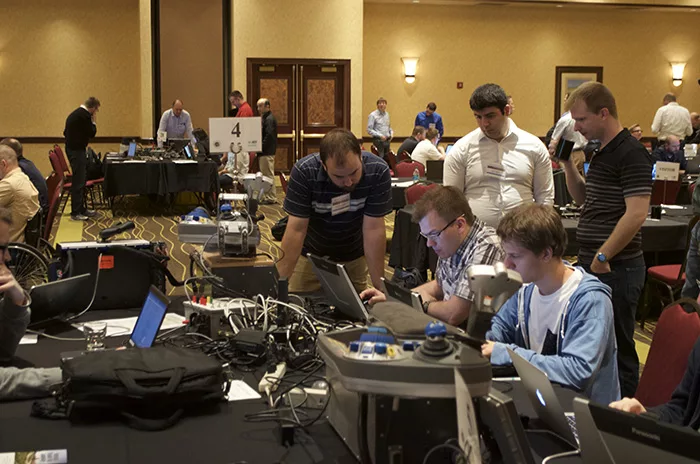At the AEF Plugfest in Lincoln, Neb., dozens of companies test their tractor, implement and terminal ECUs with one another with the intention of identifying and addressing compatibility issues. This year, many manufacturers had their first look at the AEF database and ISOBUS check tool.
A searchable database of ISOBUS-certified components for farm equipment dealers has been accessible manufacturers, dealers and farmers since its release at the SIMA Agribusiness Show this February in France. Still quite new to manufacturers, the database has yet to see widespread use, but that is likely to change.
“We now have about 100 manufacturers from around the world integrated into the database and around 100 dealerships making use of it,” says Jan-Hendrik Woelker, the database coordinator with Fuhrhop & Partner in Bielefeld Germany. “We are planning to have up to 3,000 more dealers using it by next year.”
Although much of the initial use has taken place among European manufacturers and dealers, the compatibility database received attention in the U.S. at the Agricultural Industry Electronics Foundation’s (AEF) recent 2015 Plugfest event in Lincoln, Neb. Access to the database was demonstrated alongside the AEF’s standard compatability testing of different electronic components.
One of the primary interfaces that manufacturers had their first opportunity to access at Plugfest was the new ISOBUS check tool, designed for AEF by Sontheim, a Kempten, Germany-based software developer.
“The ISOBUS standard was created so tractors, implements and terminals could work together across manufacturers automatically, but in practice that’s very difficult to do,” says Juan Aguilar, application engineer with Sontheim. “We devised the check tool to help whenever there is a compatibility problem — it allows for different manufacturers to work together in a very easy and organized way.”
Access to the ISOBUS check tool is currently in the process of trickling down from manufacturer to dealer. Eventually, dealers’ technicians will be able to use the check tool, not only to confirm functionality between two given pieces of equipment, but also send a support ticket to the respective manufacturers if a fault is detected that can't be immediately solved.
“The dealership will be able to send out a technician and have them use the check tool to capture information if there is a compatibility problem,” says Aguilar. “Then, the dealership can upload the information to the database, create a support ticket and send it to one of the manufacturers.”
The ticket will contain detailed information regarding the equipment conflict from which manufacturers can decide how to resolve the issue.
As manufacturers carefully decide how to negotiate one another’s proprietary boundaries, the database will be an evolving tool. However, Aguilar feels that as new ISOBUS certified pieces of equipment are added, and existing faults are ironed out through the AEF's Conformance Test Tool for certification, the database will become the path to eventual widespread plug-and-play farm equipment compatibility.
“It’s what we’re hoping for,” says Aguilar. “The end game here is, if a farmer has a tractor and goes to a dealership to buy an implement, by seeing that it has ISOBUS certification, he shouldn’t have to worry about it not working.
“He should be able to connect it, and have everything light up right away without kinks or bugs. The ISOBUS standard exists so farmers can do that in theory, but everyone interprets the standard differently. With AEF certification and the check tool, we are hoping to get to a point where everything plugs in like Legos.”




![[Technology Corner] A Big Step Forward for Interoperability & Data Sharing](https://www.precisionfarmingdealer.com/ext/resources/2025/12/12/A-Big-Step-Forward-for-Interoperability--Data-Sharing.webp?height=290&t=1765565632&width=400)


